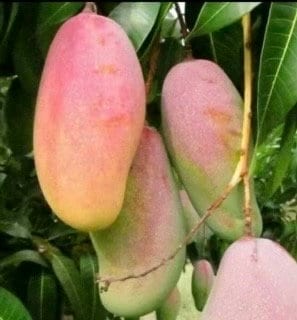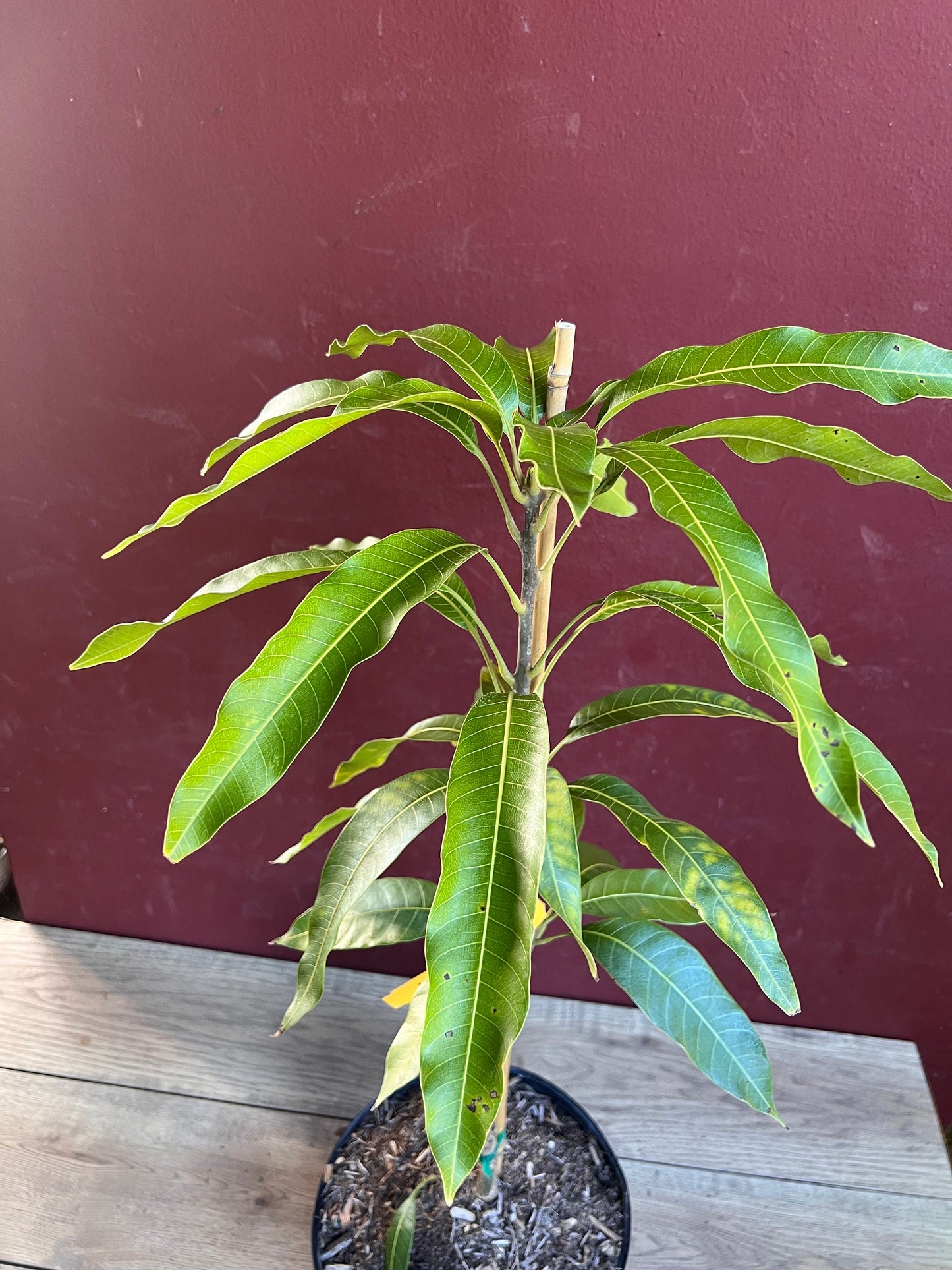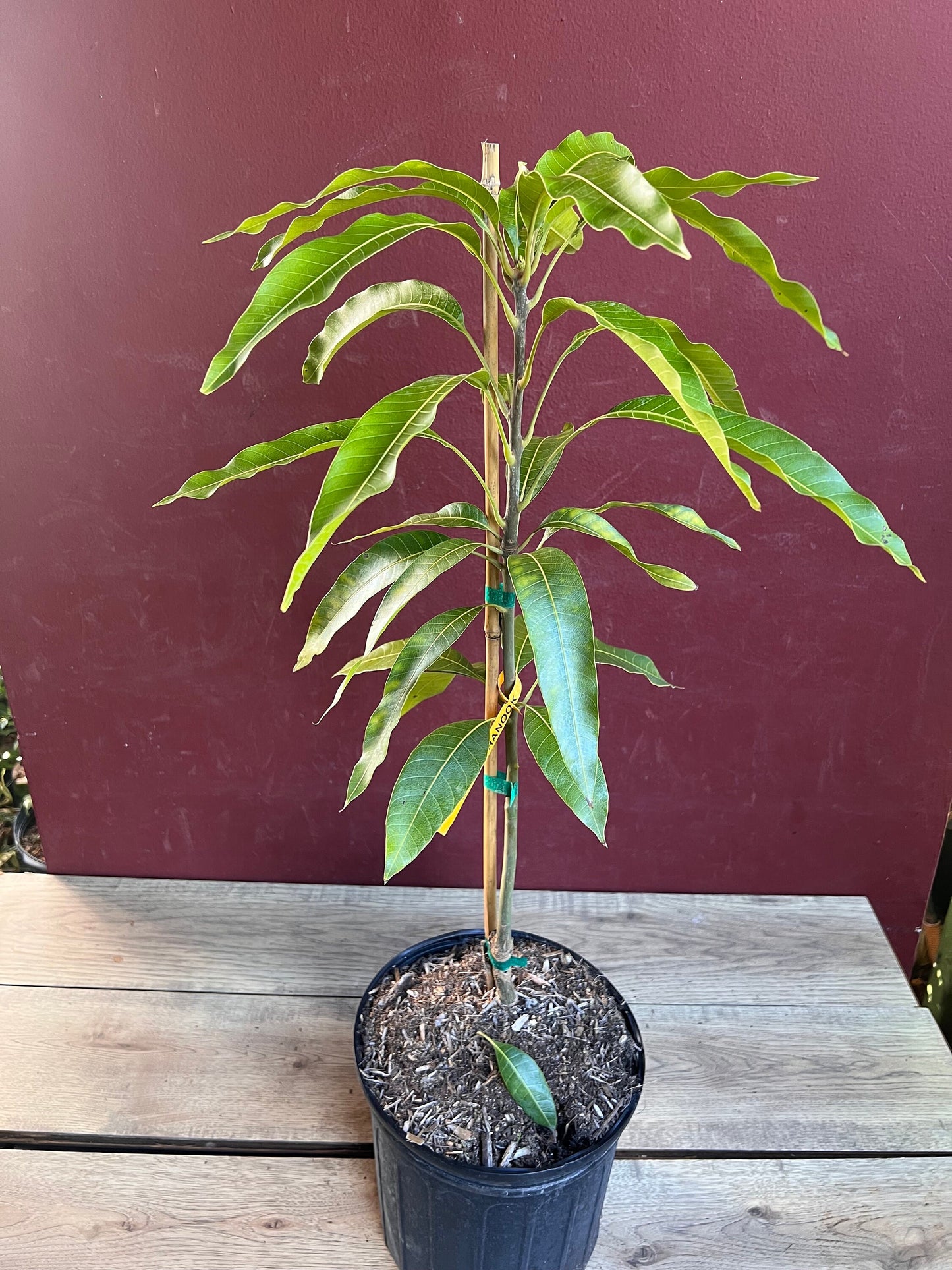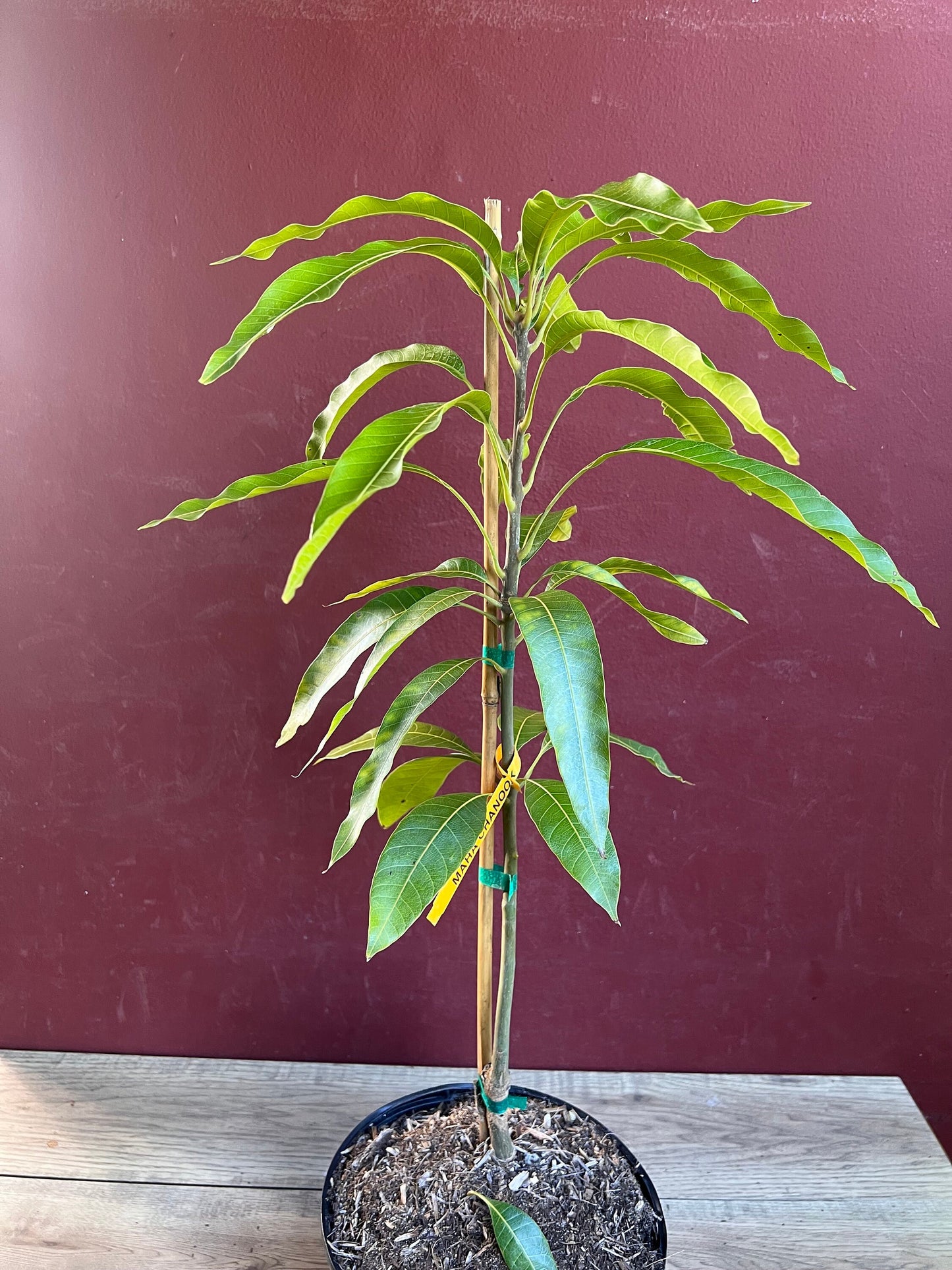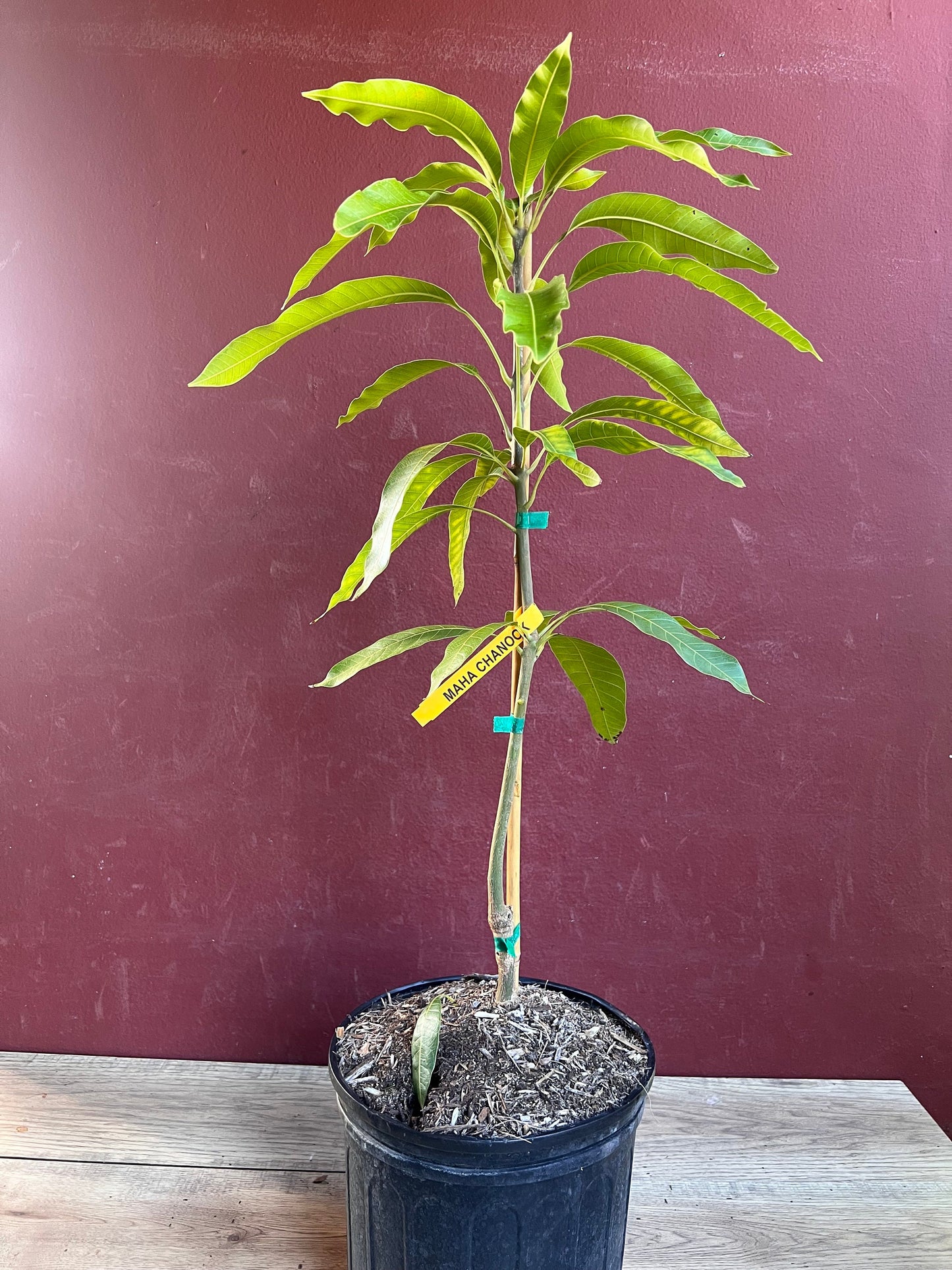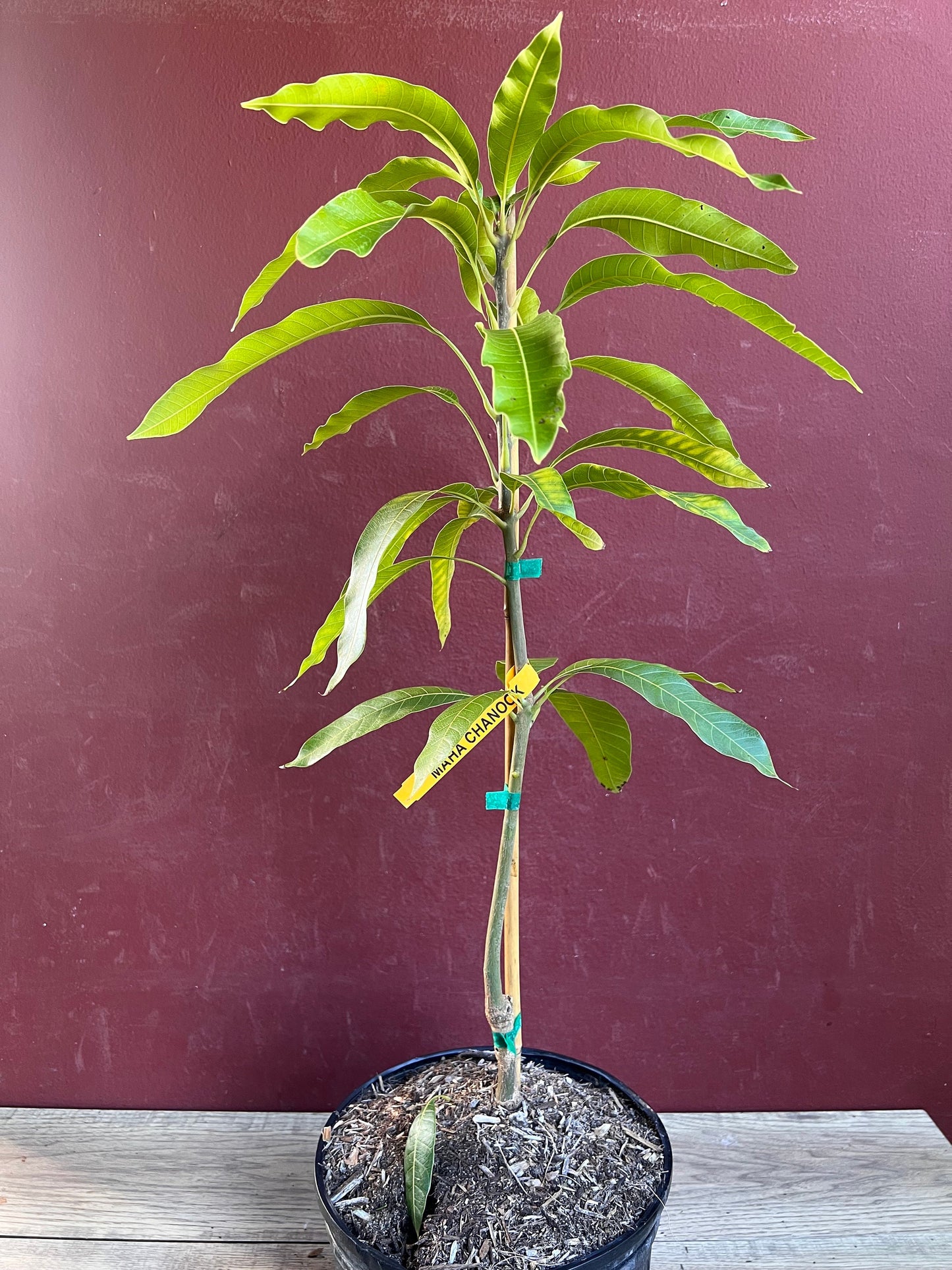Maha Chanok mango , grafted in 3 gallons pot, Rainbow mango, No ship to HI
Maha Chanok mango , grafted in 3 gallons pot, Rainbow mango, No ship to HI
Couldn't load pickup availability
Note: You will receive one Maha Chanok Mango in 3 Gallons pot similar to the pictures
Maha Chanok Mango is a highly prized Thai mango variety known for its sweetness, smooth texture, and minimal fiber. Often referred to as the "King of Mangoes" in Thailand, it has a vibrant golden-yellow skin and a creamy, non-fibrous flesh. This mango is loved for its sweet, floral flavor and is perfect for fresh eating, smoothies, and desserts. It thrives in tropical and subtropical climates and is highly sought after for its flavor, uniform shape, and attractive appearance.
Essential Care Tips for Maha Chanok Mango Trees
1. Light Requirements
- Full Sun: Maha Chanok mango trees need at least 8 hours of direct sunlight per day to thrive. Choose a location with plenty of sunlight for optimal growth and fruiting.
2. Temperature
- Warm Temperatures: These trees thrive in tropical and subtropical climates with temperatures between 70°F and 95°F (21°C to 35°C). They are not frost-tolerant and should not be planted in areas with temperatures below 50°F (10°C).
- Indoor Growing: If growing indoors, ensure the tree remains in a consistently warm environment with bright sunlight.
3. Soil Requirements
- Well-Draining Soil: Maha Chanok mango trees prefer fertile, slightly acidic to neutral soil (pH 6-7) with good drainage. Add compost or perlite to improve drainage in heavy soils.
- Soil Preparation: For container planting, use a potting mix suitable for fruit trees or citrus plants to ensure proper drainage and nutrients.
4. Watering
- Deep Watering: Water deeply, but allow the top 2-3 inches of soil to dry out between waterings. Overwatering can lead to root rot, so ensure the soil drains well.
- Drought Tolerant: Once established, Maha Chanok mango trees are somewhat drought-tolerant, but regular watering during dry periods encourages better fruit production.
- Avoid Standing Water: Prevent waterlogging to avoid root rot.
5. Fertilizing
- Balanced Fertilizer: During the growing season (spring and summer), use a balanced fertilizer (e.g., 10-10-10) or one designed for mango trees. Fertilize every 4-6 weeks to support healthy growth.
- Organic Matter: Add organic compost around the base of the tree once a year to improve soil quality and provide essential nutrients.
6. Pruning
- Minimal Pruning: Light pruning is needed to maintain a strong structure, remove dead branches, and ensure good airflow. Prune in early spring or after fruiting.
- Encourage Healthy Growth: Pruning helps shape the tree and allows sunlight to reach the inner branches for better fruiting.
7. Pollination
- Self-Pollinating: Maha Chanok mango trees are self-pollinating but benefit from cross-pollination for better fruit quality and quantity. Insects like bees pollinate mango flowers.
- Indoors: If growing indoors, hand-pollinate using a small brush to transfer pollen from flower to flower.
8. Fruit Care
- Flowering and Fruiting: Maha Chanok mangoes bloom in late spring or early summer, with fruit ripening in 3-4 months. The fruit turns from green to golden-yellow when ripe, and should yield slightly to the touch when ready.
- Fruit Thinning: Thin the fruit if necessary to allow the remaining ones to grow larger and improve flavor.
9. Container Growing
- Container Size: Choose a large pot with good drainage. The container should have enough space for the tree's roots to grow, especially as it matures.
- Repotting: Repot the tree every 2-3 years to refresh the soil and provide more space for the roots as the tree grows.
10. Pests and Problems
- Pests: Mango trees are generally resistant to pests but may attract aphids, scale, or mealybugs. Treat infestations with neem oil or insecticidal soap.
- Diseases: Mango trees may suffer from powdery mildew or anthracnose, especially in humid conditions. Ensure good airflow and avoid overhead watering to prevent fungal growth.
- Root Rot: Ensure proper drainage to avoid root rot, which can occur with overwatering or poorly draining soil.
11. Harvesting
- Timing: Maha Chanok mangoes are typically ready to harvest in late summer or early fall, 3-4 months after flowering.
- Ripeness: Mangoes ripen from green to golden-yellow. Harvest when the fruit is slightly firm but has a fragrant smell at the stem end. Mangoes ripen off the tree, so they can be left at room temperature to soften.
Summary
To care for a Maha Chanok mango tree, ensure it receives full sun, is planted in well-draining, slightly acidic soil, and is watered deeply but not excessively. Regular fertilizing, light pruning, and pest management are essential for healthy growth and fruiting. This self-pollinating variety thrives in tropical and subtropical climates, and with the right care, it will reward you with delicious, sweet, fiberless mangoes perfect for fresh eating or making smoothies and desserts.
Share
